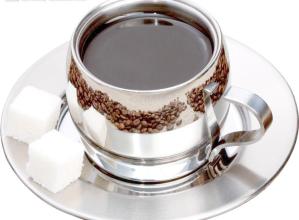Strong sweetness of Panamanian Coffee Flavor Coffee introduction to Panamanian Coffee producing area
Floral, tropical fruit, intense sweetness; these are the feelings that rose summer has always brought us. Properly baked, they make you feel like sipping the fragrance of a bouquet of flowers. In case you haven't heard the story, Rose Summer is an ancient native from Ethiopia that was brought into Costa Rica as a coffee sample and distributed to several small farms for small-scale trials.
Not much attention was paid to the rose until the Esmeralda estate in Panama separated it from the rest and won the national coffee championship.
She's so extraordinary, fruity and floral, it's like a Yega Shefi from Ethiopia, Africa, halfway around the world. Of course, that's old news now. A few small farms are getting summer roses, and eager ones want to grow their own.
However, the results vary, depending on weather, soil and altitude, and the taste of this "star" variety does not seem to be the same in different geographical locations. But in the actanango region, we see typical rosewood characteristics: slender bean shapes, changes in baking, and elegant, ripened flavors in the cup. Elliot founded the esmerada farm, which was not a coffee farm but a pasture, 40 years later in 1964. Mr. Bideson's grandfather, Ruth Loveau. M. bideson bought esmerada farm in order to retire and have a place to live, grandfather lut ruff. Born in Sweden, Mr. Bidesson was president of the Bank of America and director of the United Nations Development Programme.
His son Blais. Mr. bidazon moved from california to panama in 1973, inherited his father's farm, changed most of the farm to coffee cultivation in 1987, and purchased machinery for refining coffee in 1994 to create a brand investment. Mr. and Mrs. Bideson raised three children, Eligu (born Philadelphia, 1966), Richelieu (born Sweden, 1967) and Daniele (born Panama, 1974), while the coffee farm was established.
In 1996 Braith and Rachel visited a farm for sale in the Haramijon area of the Boketty Valley and were attracted by the beauty of the farm and immediately bought it. This is Esmeralda? Harami Jonon Farm, third son Danielle. Mr. Bideson planted the coffee world's attention in this farm-Geisha coffee!
Panama rose growing altitude: 1,500-1,650 meters, unique growth environment makes it unique flavor:
Dry fragrance: tea fragrance, flower fragrance (magnolia flower, tulip) vanilla plant, milk fragrance, brown sugar sweet, high champagne and aroma rise.
Wet fragrance: apricot, caramel, milk, flower fragrance.
Sip: Oil texture is good, delicate pear mountain special tea feeling, high-grade white wine astringent but immediately turned into a delicate smooth Body full of mouth.
Berry candy and spice sweet intertwining, accompanied by floral emission, aftertaste full of floral, sweet fruit and body is quite persistent, the lower the temperature, the more delicate the acid.
La Esmeralda has so far won 12 coffee competitions and three online public bidding records: $21 in 2004,$50.25 in 2006 and $130 in 2007! Of course, other countries have also bid for a pound of good coffee close to 50 dollars (Brazil CoE champion Fazenda Santa Inês in 2005), El Injerto in 2008 Guatemala CoE champion 80.20 dollars; but you pay attention to the timing, that is, La Esmeralda bid record, before no bid to surpass her, and then she will surpass others, saying she is the record maker, no fluke

Important Notice :
前街咖啡 FrontStreet Coffee has moved to new addredd:
FrontStreet Coffee Address: 315,Donghua East Road,GuangZhou
Tel:020 38364473
- Prev

Indonesia Mantenin Coffee Bean Flavor and taste introduction to Indonesian coffee characteristics Indonesian boutique coffee
Manning is not the name of the producing area, the place name, the port name, nor the name of the coffee breed. How did it get its name? In fact, it is a phonetic error of the mandheling people in Mandaining, Indonesia. During the Japanese occupation of Indonesia during World War II, a Japanese soldier drank mellow coffee in a cafe, so he asked the shopkeeper the name of the coffee, and the boss mistook him for asking where you were.
- Next

Clean and full taste of Tanzanian coffee introduces the manor of Tanzanian coffee producing area
Tanzanian coffee has the excellent pedigree of the Middle Eastern non-washed bean family, bright acidity, rich and irritating flavor. There is no doubt that Kenyan coffee takes the lead in this family, but Tanzania has many advantages that are very similar to those of Kenya. Round beans are often specially selected and expensive, but sometimes they get moldy.
Related
- Detailed explanation of Jadeite planting Land in Panamanian Jadeite Manor introduction to the grading system of Jadeite competitive bidding, Red bid, Green bid and Rose Summer
- Story of Coffee planting in Brenka region of Costa Rica Stonehenge Manor anaerobic heavy honey treatment of flavor mouth
- What's on the barrel of Blue Mountain Coffee beans?
- Can American coffee also pull flowers? How to use hot American style to pull out a good-looking pattern?
- Can you make a cold extract with coffee beans? What is the right proportion for cold-extracted coffee formula?
- Indonesian PWN Gold Mandrine Coffee Origin Features Flavor How to Chong? Mandolin coffee is American.
- A brief introduction to the flavor characteristics of Brazilian yellow bourbon coffee beans
- What is the effect of different water quality on the flavor of cold-extracted coffee? What kind of water is best for brewing coffee?
- Why do you think of Rose Summer whenever you mention Panamanian coffee?
- Introduction to the characteristics of authentic blue mountain coffee bean producing areas? What is the CIB Coffee Authority in Jamaica?

